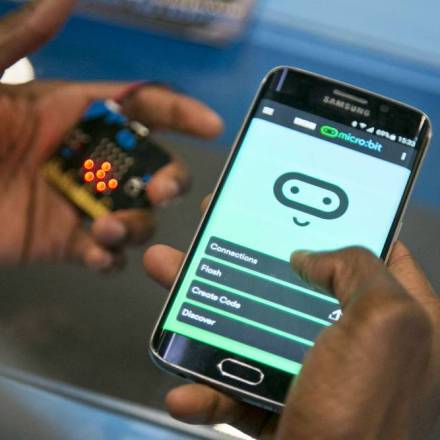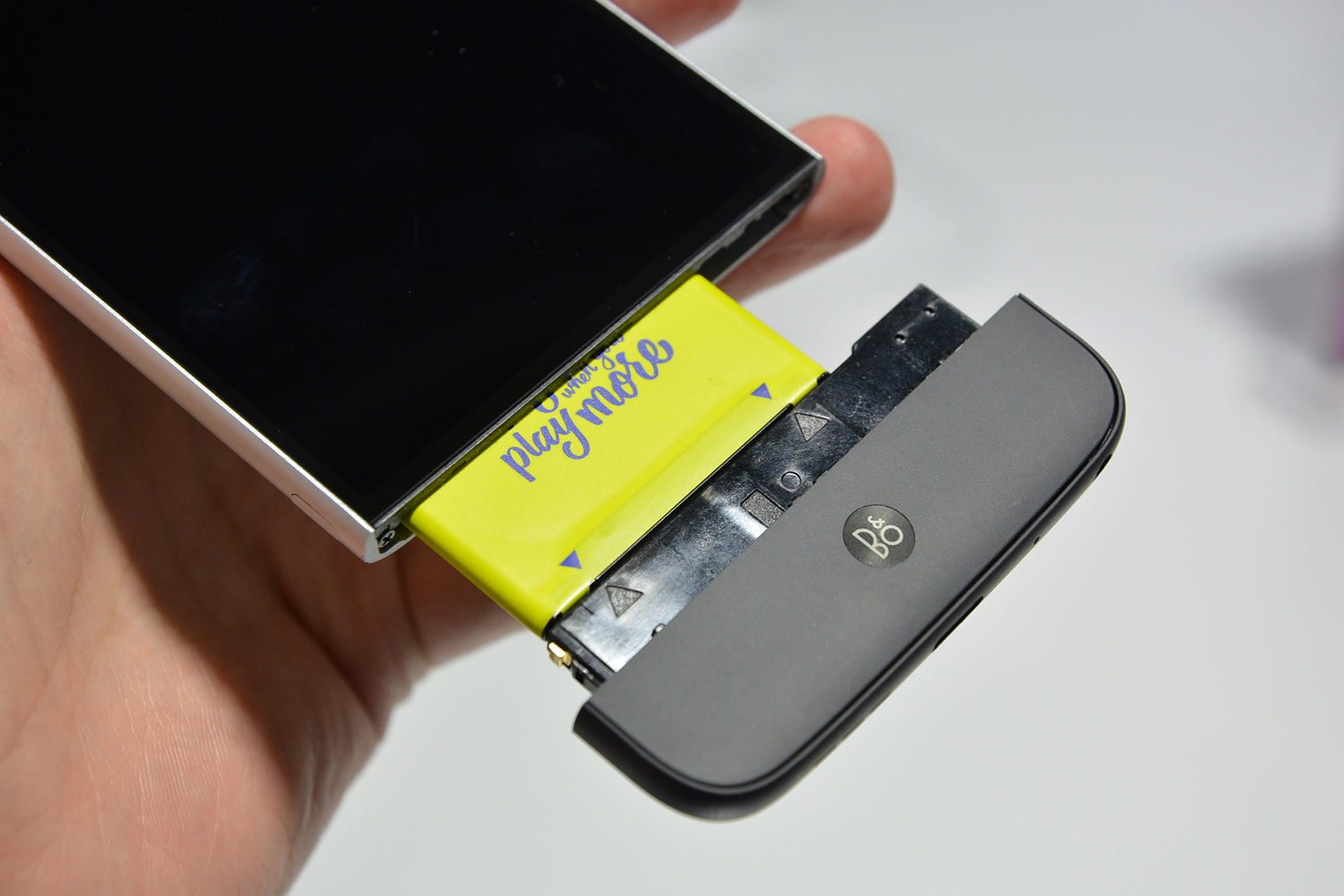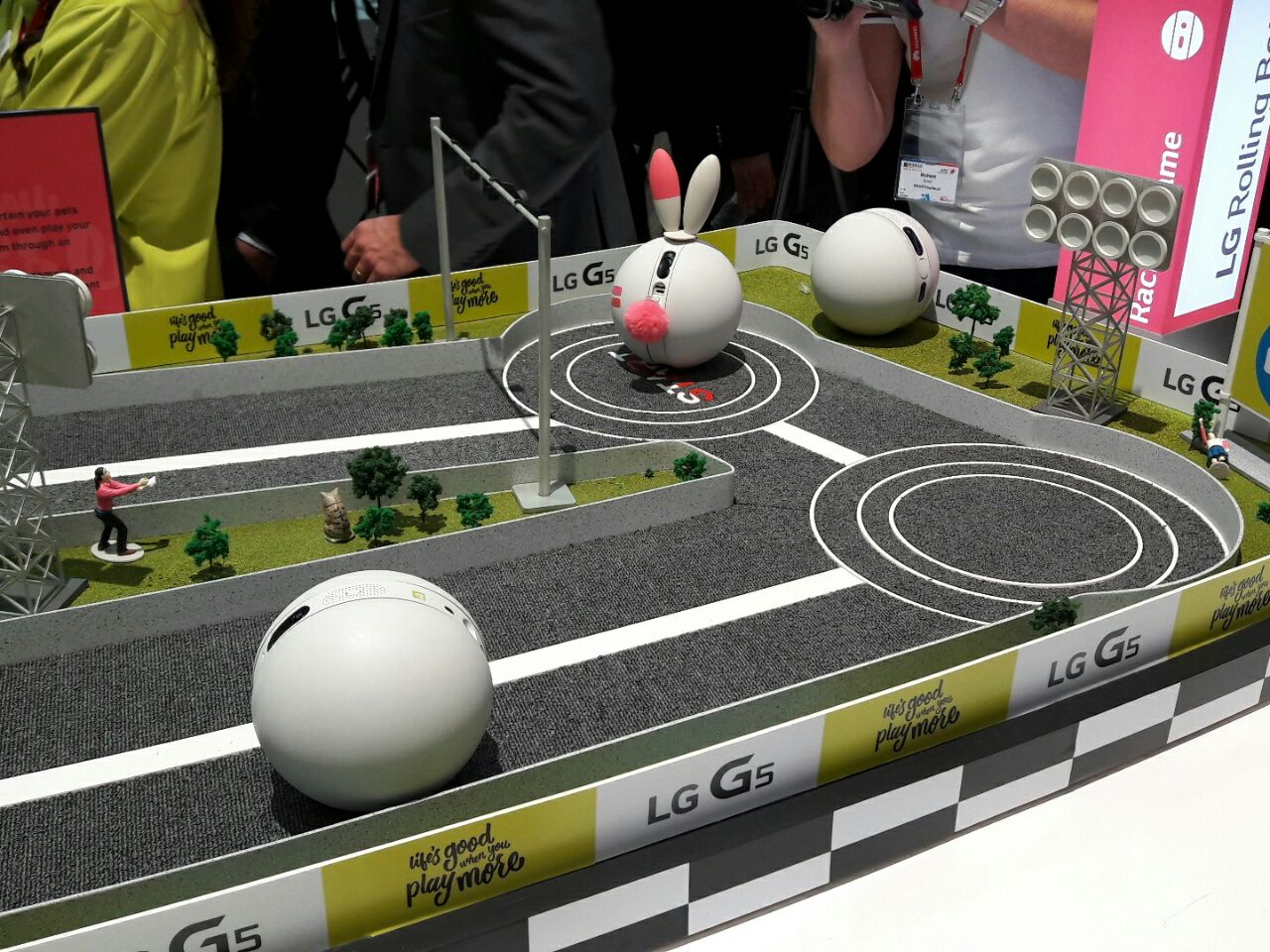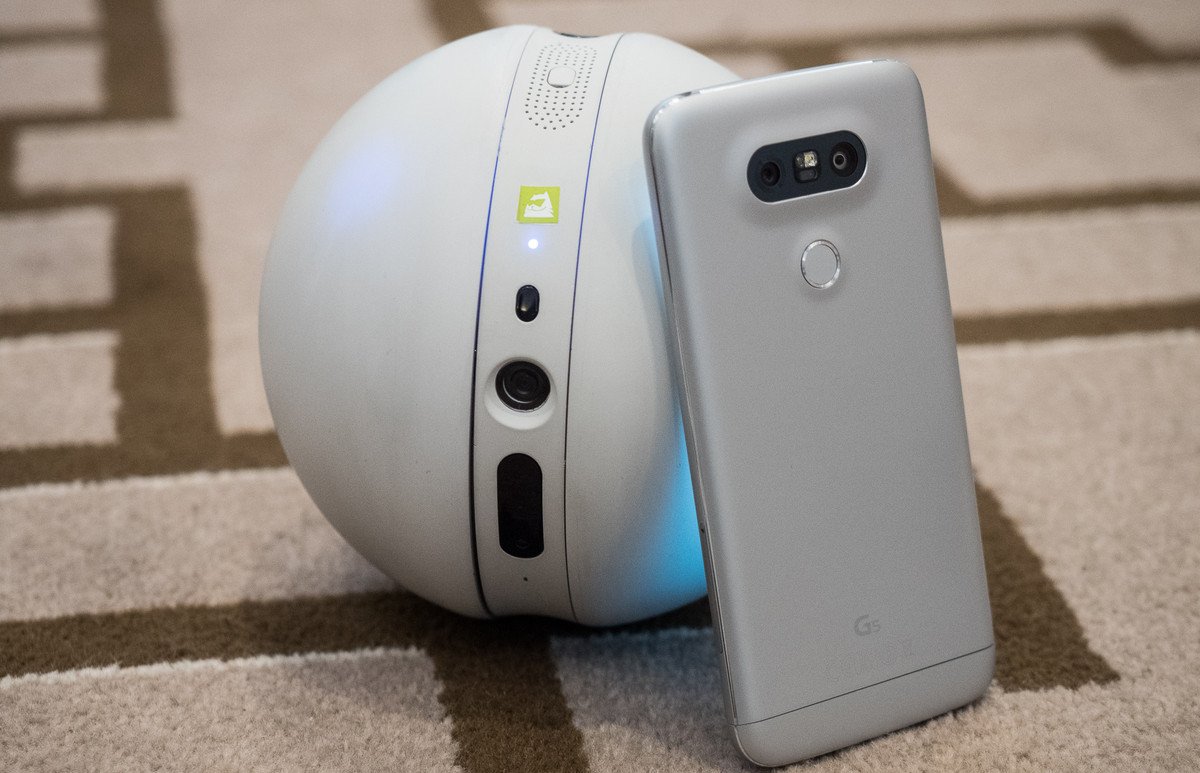
24
de Febrer
de
2016
Act.
24
de Febrer
de
2016
Walking around the Mobile Word Congress is exhausting. Especially if you have no fixed route, avoiding the crowds of excited Asian people who move around at top speed between the pavilions could be the idea for a platforming video game. Finding small companies with modest products is, sometimes, a genuine odyssey –but do not worry, we will provide a summary during the week. Nevertheless, the large phone manufacturers are visible straight away, all you have to do is head for the most crowded areas of the fair and sure enough you will find the Samsung, Huawei or LG stands.
If you are a fan of the Android world, the Mobile World Congress is a crazy place to be. Each manufacturer has a mobile with a bigger screen than its predecessor, with a camera with more megapixels or a processor with more cells. In fact, as my friend Ganyet said a few days ago in an article, most of the "revolutions" being presented these days at the event last about as long as the fair. Once it is over, you won't hear anyone talking about them again.
Making predictions is always risky, but I dare say that is exactly what will happen with the new LG device, the G5 model in its catalogue of smartphones. The claim is that the product is –as most media outlets have referred to it– fantastic: the world's first modular telephone.
To start with, in seeing the press note, I thought that at last someone had dared to make public Google's Project Ara, which we spoke about a while ago on VIA Empresa and which consists of a mobile telephone that, as if it were a puzzle, allows you to remove and add components or expand performance in a super simple way.
After arriving full of enthusiasm at the LG stand, my disappointment was huge. The brand new modular telephone is nothing more than a normal, everyday Android to which we can add –at the cost of making it bigger and heavier– some external elements.
The process for doing this is quite disappointing: first you have to pull out the bottom part. When I tried it, the brand representative literally said to me: "Pull harder, don't worry, you won't break it." So, I pulled harder, heard a "crack!" and the bottom part of the device that contains the battery came away –which obviously turned the mobile off.

The next step is to separate the battery from the base of the telephone. To do this, you have to make an intuitive movement that requires pulling one of the sides to release some small tabs. The whole mechanism made me think of the covers used to close the batteries on the old Nokias, which at the moment it ceased to make contact... au revoir telephone.
Having come this far, the enhancements you can add are –ironically– spectacular:
• A module that adds an extra battery to the telephone and that, moreover, provides physical controls for the camera –a mechanical wheel for the zoom– and a shutter.
• Another module is manufactured by Bang & Olufsen and in principle works as a high-quality amplifier. It was impossible to test, thanks to the surrounding noise from the crowds of people attracted by the powerful claim that it was impossible to beat.
Nevertheless, I must say that the visit to LG was not entirely disappointing. On a test track there were three Rolling Bots, robotic balls –which suspiciously reminded me of BB8 in the new Star Wars film– that can be controlled at a distance with a mobile telephone.

The device has an integrated camera, a laser pointer and speaker. That allows you, if you are at work, to take a tour of your house to see if there is anyone there –and if there is, to speak to him or her remotely– or, as the manufacturer explained, to keep your pet occupied and amused when you are not there.
Its availability and price have still not been revealed, even though one of the brand representatives told us –off the record– that the device could end up costing around 150 euros.

Across the aisle, we get to the Samsung stand, where we find the much-awaited S7 and S7 Edge, the iPhone killer for this year.
It must be said that the device is extremely well made –in fact on the level of design it is practically the same as its predecessor– and the screen is a marvel and the camera, for the first time, puts the iPhone in the shade. It takes sharp photographs, in brilliant colours and at an enviable speed –it even has a burst mode.
For lovers of specs, the S7 model has a AMOLED 5.1 inch screen –compared with the 5.5 inches of the S7 Edge– a Snapdragon 820 processor and 4Gb of RAM. As for the battery, Samsung has increased the capacity of its predecessors: the S7 model has gone from 2.550mAh to 3.000 and the Edge from 2.600 to 3.600mAh.
Another of this year's novelties is that both are submersible up to 1.5 metres for 30 minutes and the storage can be expanded with microSD cards.
However, after looking through top-of-the-range telephones, tablets, virtual reality goggles –it seems these will be the stars of the Mobile World Congress this year– we come to a little gem hidden in a corner of the Samsung press room: the micro:bit, a device developed jointly with the BBC.
The product, designed for children and aimed at the UK market –where programming is a key subject in schools– allows kids to develop genuinely interesting programs in a visual way from a mobile telephone.
With the visual programming language based on blocks, children can define actions that, once detected by the device –such as a change in lighting, a sound, a pulse or a shake– are sent to the mobile telephone, which will act according to the programming –taking a photo, reproducing a sound, opening an app, and so on. All in a fun and easy-to-use way.
According to what we were told, for the moment the micro:bit will only be available in the United Kingdom at a price of around 15 pounds.
If you are a fan of the Android world, the Mobile World Congress is a crazy place to be. Each manufacturer has a mobile with a bigger screen than its predecessor, with a camera with more megapixels or a processor with more cells. In fact, as my friend Ganyet said a few days ago in an article, most of the "revolutions" being presented these days at the event last about as long as the fair. Once it is over, you won't hear anyone talking about them again.
Making predictions is always risky, but I dare say that is exactly what will happen with the new LG device, the G5 model in its catalogue of smartphones. The claim is that the product is –as most media outlets have referred to it– fantastic: the world's first modular telephone.
To start with, in seeing the press note, I thought that at last someone had dared to make public Google's Project Ara, which we spoke about a while ago on VIA Empresa and which consists of a mobile telephone that, as if it were a puzzle, allows you to remove and add components or expand performance in a super simple way.
After arriving full of enthusiasm at the LG stand, my disappointment was huge. The brand new modular telephone is nothing more than a normal, everyday Android to which we can add –at the cost of making it bigger and heavier– some external elements.
The process for doing this is quite disappointing: first you have to pull out the bottom part. When I tried it, the brand representative literally said to me: "Pull harder, don't worry, you won't break it." So, I pulled harder, heard a "crack!" and the bottom part of the device that contains the battery came away –which obviously turned the mobile off.

The next step is to separate the battery from the base of the telephone. To do this, you have to make an intuitive movement that requires pulling one of the sides to release some small tabs. The whole mechanism made me think of the covers used to close the batteries on the old Nokias, which at the moment it ceased to make contact... au revoir telephone.
Having come this far, the enhancements you can add are –ironically– spectacular:
• A module that adds an extra battery to the telephone and that, moreover, provides physical controls for the camera –a mechanical wheel for the zoom– and a shutter.
• Another module is manufactured by Bang & Olufsen and in principle works as a high-quality amplifier. It was impossible to test, thanks to the surrounding noise from the crowds of people attracted by the powerful claim that it was impossible to beat.
Nevertheless, I must say that the visit to LG was not entirely disappointing. On a test track there were three Rolling Bots, robotic balls –which suspiciously reminded me of BB8 in the new Star Wars film– that can be controlled at a distance with a mobile telephone.

The device has an integrated camera, a laser pointer and speaker. That allows you, if you are at work, to take a tour of your house to see if there is anyone there –and if there is, to speak to him or her remotely– or, as the manufacturer explained, to keep your pet occupied and amused when you are not there.
Its availability and price have still not been revealed, even though one of the brand representatives told us –off the record– that the device could end up costing around 150 euros.

Across the aisle, we get to the Samsung stand, where we find the much-awaited S7 and S7 Edge, the iPhone killer for this year.
It must be said that the device is extremely well made –in fact on the level of design it is practically the same as its predecessor– and the screen is a marvel and the camera, for the first time, puts the iPhone in the shade. It takes sharp photographs, in brilliant colours and at an enviable speed –it even has a burst mode.
For lovers of specs, the S7 model has a AMOLED 5.1 inch screen –compared with the 5.5 inches of the S7 Edge– a Snapdragon 820 processor and 4Gb of RAM. As for the battery, Samsung has increased the capacity of its predecessors: the S7 model has gone from 2.550mAh to 3.000 and the Edge from 2.600 to 3.600mAh.
Another of this year's novelties is that both are submersible up to 1.5 metres for 30 minutes and the storage can be expanded with microSD cards.
However, after looking through top-of-the-range telephones, tablets, virtual reality goggles –it seems these will be the stars of the Mobile World Congress this year– we come to a little gem hidden in a corner of the Samsung press room: the micro:bit, a device developed jointly with the BBC.
The product, designed for children and aimed at the UK market –where programming is a key subject in schools– allows kids to develop genuinely interesting programs in a visual way from a mobile telephone.
With the visual programming language based on blocks, children can define actions that, once detected by the device –such as a change in lighting, a sound, a pulse or a shake– are sent to the mobile telephone, which will act according to the programming –taking a photo, reproducing a sound, opening an app, and so on. All in a fun and easy-to-use way.
According to what we were told, for the moment the micro:bit will only be available in the United Kingdom at a price of around 15 pounds.